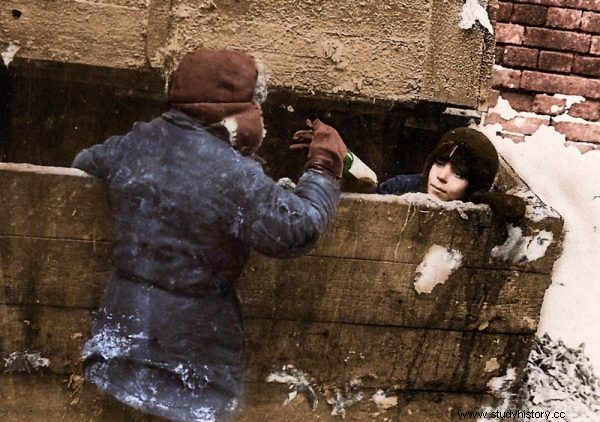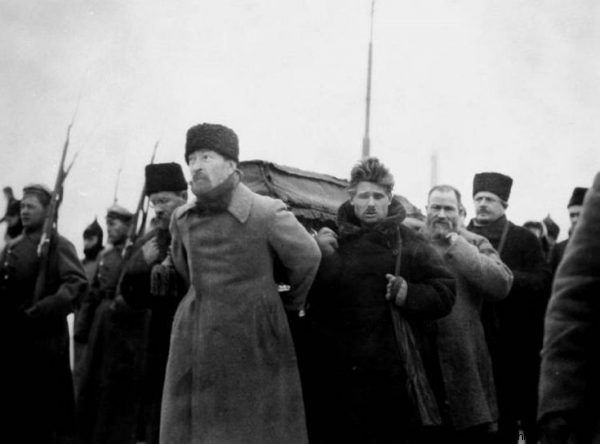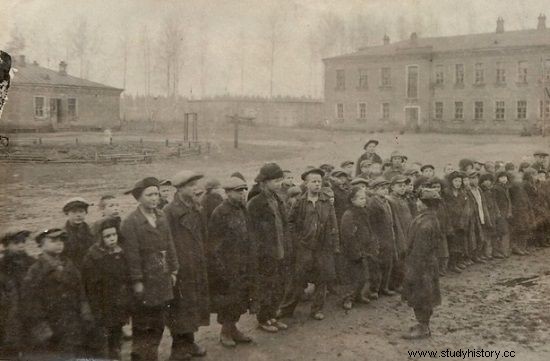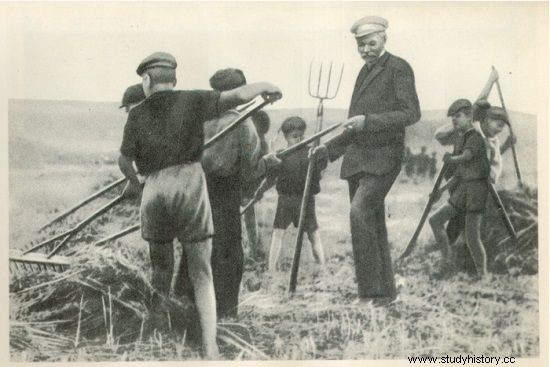They wander in clusters, unlike humans, making sounds that barely resemble human speech. They have twisted animal faces, cropped hair and blank eyes, wrote a terrified Malcolm Muggeridge in the 1930s. What beasts must the British journalist living in Moscow mean?
I saw them in Moscow and Leningrad - continued the correspondent - They sat under bridges, chatted at stations. They suddenly appeared like a bunch of wild monkeys, then scattered and disappeared. Muggeridge worked for the Manchester Guardian, but most of all he was an incurable lover of Bolshevism. In pursuit of his passion, he moved to the Soviet paradise ... and then discovered that neither Moscow, nor former St. Petersburg, nor the entire USSR is a paradise at all.
The creatures described above, that is ... Russian street children, shocked him the most. They were called diffrent. They were orphans, refugees and the homeless. Feral creatures without any care. For the most part, they were three to seven years old, and for them the socialist land of happiness had become hell on earth. According to estimates, their number exceeded six million.
For Dzerzhinsky's troubles?
In the 1920s, the problem of the gigantic scourge of homelessness among children finally appeared in the minds of the leadership of the only right party.

Deprived of parents, home and sense of security, they had to cope somehow, even if that meant wandering in an unheated basement in winter.
Vladimir Ilyich Lenin went to his man for special tasks for help:the head of the secret police Felix Dzerzhinsky ( read more about him! ). The situation was so absurd that it was the activity of Bloody Felix that was one of the main reasons for the avalanche increase in the number of prizorless.
It is as a result of hostilities, chaotic economic reforms, food shortages and ruthless red terror that countless numbers of the inhabitants of the former Empire lost their lives. When their parents died from a bullet, starved to death or disappeared into the depths of Lubyanka, the perpetrators of their deaths did not care too much about the orphans left by them. And most of them ended up on the street.
It got to such an extreme that when Education Commissioner Anatoly Łuczarski and Lenin's wife Nadezhda Krupskaya in 1922-1923 tried to count the prizorites, they had to stop at six million estimates.
Finding out the exact scale of the problem turned out to be impossible for a simple reason - the children, taught by experience, fell into the ground upon the news of the arrival of the official who was looking for them.

Feliks Dzerzhinsky was to deal with the problem of the prizorless. In the photo, he carries the coffin with Lenin's body (public domain).
Dzerzhinsky, for his part, also wanted to learn more about the bezprizorni. For this purpose, he delegated one of his subordinates to the south of the country. A faithful chekist was supposed to present him a report on child homelessness.
Its fragment in her biography of Bloody Feliks is presented by Sylwia Frolow:
The number of homeless children has reached catastrophic levels in recent times; the children in an unorganized and disorderly mass go somewhere south, where they think it is warm and there is no hunger. On the way it connects to form entire transports. […] This children's stream grows day by day and becomes very dangerous.
The situation of the small homeless was not only dramatic. Also, the inhabitants of orphanages lived in conditions which were outright offensive to human dignity. The envoy of Dzerzhinsky also appeared in such places. As Frołow writes, she also visited shelters, where six or eight children slept on one bed. They had no clothes or medicine, not even rags to wrap their legs in in winter. They walked barefoot and frosted their feet. They ate from tinned food and suffered from hunger puffiness.
Hunger, Pathology and Waits
The method to get rid of the problem was to remove it by force. And who would be better suited to this than the notorious Chekists? So the officers of the bird cherry were ordered to catch (literally catch) small bezprizorni. It was not an easy task at all.
The little ones were able to squeeze into all sorts of holes and hide in places that an ordinary person would not think of. In addition, some became little bandits as early as a few years old, so the Chekists had to be on their guard ( read more about the ruthless Soviet security service! ).
If a larger group of such young-old bandits gathered, should single Chekists looking for them in the dark alleys of Moscow feel confident and safe? The girls weren't any better.

These little skinny and dirty kids are pupils of a Soviet orphanage. This is how it was in reality…
They may not have killed adults, but isn't infanticide murder? According to estimates cited by Frolow, over eighty percent of prizorless girls around the age of twelve had already had at least one pregnancy . And what were the chances of survival for an infant whose mother was a homeless child and whose father was mostly unknown? Orphanage? On the threshold of a strange house, hoping someone will take them? Dumpster? Neither of these options seem good.
Ordinary people had too many problems of their own to take responsibility for the foundling bastard child. There remained orphanages which, although Nadezhda Krupskaya vehemently denied this in statements for foreign media, were in fact mere deaths .

The environment of the prizorless was pathological through and through. These children banded together robbed, stole, assaulted people, engaged in harlotry (quoting Sylwia Frołow again, pedophile brothels were popping up like mushrooms after the rain ).
The prizorless herds were habitats for various diseases - scabies, tuberculosis, lice and various venereal diseases. In addition, even the little ones became addicted to alcohol, cigarettes and intoxicants.
Due to the power disproportion between adults and nonprizorless children, their only chance was to form larger groups. Even then, however, they were still at risk of beatings and sexual violence. Many of them fell victim to merciless murder after all, since the parents were sitting in the gulag or rotting in the grave, there was no one who would loudly plead for the fate of small pests ...
Red Star of Soviet Pedagogy
When it seemed that there was no rescue for these little unfortunates, Anton Semionovich Makarenko entered the action. On his initiative, colonies for homeless children began to appear in Russia. The first such bezprizorless "commune" was organized near Moscow, in the town of Bolszewo. Feliks Dzerzhinsky himself came to Bolszewo several times, saying that these smoluchy are my best friends. I rest with them.
As you can see, The Red Executioner felt better among the utterly demoralized youth than among his sinister Chekists . In any case, Dzerzhinsky had many colonies and youth centers named after him in the Soviet Union.

... and so on propaganda pictures. (Maksym Gorky at the harvest in the children's colony).
Gaining experience in centers for the prizorless, Makarenko grew up to be a star of Soviet and later world pedagogy (he is mentioned, among others, by the Polish pedagogical dictionary of Wincenty Okoń, or Spanish and German pedagogical literature). He developed a unique system of socialist education.
Although he had no chance of fully rehabilitating the children and adolescents staying in the centers, at least he made them discipline against the authorities . Believing in the ideas of communism, he raised a Soviet man from a small bandit.
A pupil of such an exemplary Komuna im. Dzerzhinsky (a facility for derailed youth), or Kolonia them. Gorky (for juvenile and juvenile criminals), obedient to the authorities and trained by the system, and deprived of moral restraints in his youth, he became an ideal candidate for an NKVD.
